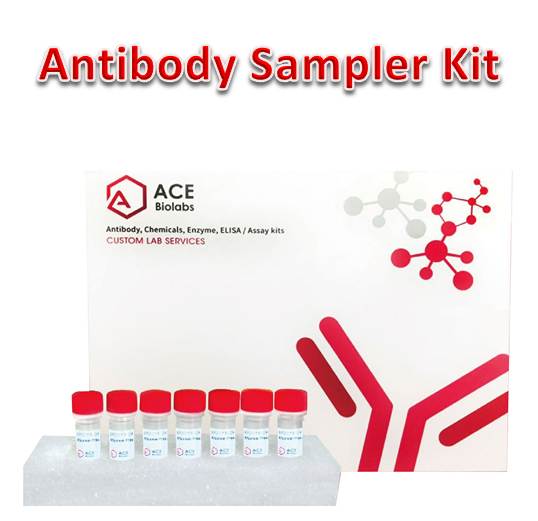Antibody, Antibody Sampler Kit
Procaspase Antibody Sampler Kit
- Catalog Number : AK0250
- Number : AK0250
-
Size:
Qty : - Price : Request 詢價
- Stock : Request
Introduction
Apoptosis is a regulated physiological process leading to cell death. Caspases, a family of cysteine acid proteases, are central regulators of apoptosis. Initiator caspases (including 2, 8, 9, 10 and 12) are closely coupled to proapoptotic signals, which include the FasL, TNF-α, and DNA damage. Once activated, these caspases cleave and activate downstream effector caspases (including 3, 6 and 7), which in turn cleave cytoskeletal and nuclear proteins like PARP, α-fodrin, DFF and lamin A, and induce apoptosis. Caspase-8 (FLICE, Mch5, MACH) and Caspase-9 (ICE-LAP6, Mch6) are initiator caspases. CD95 receptor (Fas/APO-1) and tumor necrosis factor receptor 1 (TNFR1) activate caspase-8, leading to the release of the caspase-8 active fragments, p18 and p10. Cytochrome c released from the mitochondria associates with procaspase-9 (47 kDa)/Apaf 1. Apaf-1 mediated activation of caspase-9 involves intrinsic proteolytic processing resulting in cleavage at Asp315 and producing a p35 subunit. Another cleavage occurs at Asp330 producing a p37 subunit that can serve to amplify the apoptotic response. Caspase-3 (CPP-32, Apoptain, Yama, SCA-1), Caspase-6 (Mch2), and Caspase-7 (CMH-1, Mch3, ICE-LAP3) are effector caspases. Activation of caspase-3 requires proteolytic processing of its inactive zymogen/proform into activated p17 and p12 subunits. Procaspase-7 is activated through proteolytic processing by upstream caspases at Asp23, Asp198, and Asp206 to produce the mature subunits. Procaspase-6 is cleaved by caspase-3 at Asp23, Asp179 and Asp193 to form active large (p18) and small (p11) subunits. PARP, a 116 kDa nuclear poly (ADP-ribose) polymerase, appears to be involved in DNA repair in response to environmental stress . This protein can be cleaved by many ICE-like caspases in vitro and is one of the main cleavage targets of caspase-3 in vivo. In human PARP, the cleavage occurs between Asp214 and Gly215, which separates the PARP amino-terminal DNA binding domain (24 kDa) from the carboxy-terminal catalytic domain (89 kDa). PARP
General Information
| Reactivity | Human |
|---|---|
| Application | WB, ELISA |
| Host | Rabbit |
| Clonality | Polyclonal |
| Conjugate | HRP,Non-conjugated |
| Storage instruction | Store at -20℃. Avoid freeze / thaw cycles. |
| Research topic | Regulation of Apoptosis |
Product Includes
| Product name | Quantity | Applications | Reactivity | Host |
| CASP3 Polyclonal Antibody | 20μL | WB,IHC,IF,ELISA | Human, Mouse, Rat | Rabbit |
| CASP6 Polyclonal Antibody | 20μL | WB,IHC,IF,ELISA | Human, Mouse, Rat | Rabbit |
| CASP7 Polyclonal Antibody | 20μL | WB,IHC,ELISA | Human | Rabbit |
| CASP8 Polyclonal Antibody | 20μL | WB,IHC,ELISA | Human, Mouse, Rat | Rabbit |
| CASP9 Polyclonal Antibody | 20μL | WB,IHC,IF,ELISA | Human, Mouse, Rat | Rabbit |
| LMNA Polyclonal Antibody | 20μL | WB,IHC,IF,ELISA | Human, Mouse, Rat | Rabbit |
| PARP1 Polyclonal Antibody | 20μL | WB,ELISA | Human, Mouse, Rat | Rabbit |
| Goat Anti-Rabbit IgG (H+L)(peroxidase/HRP conjugated) | 120μL | WB,ELISA |







.png)